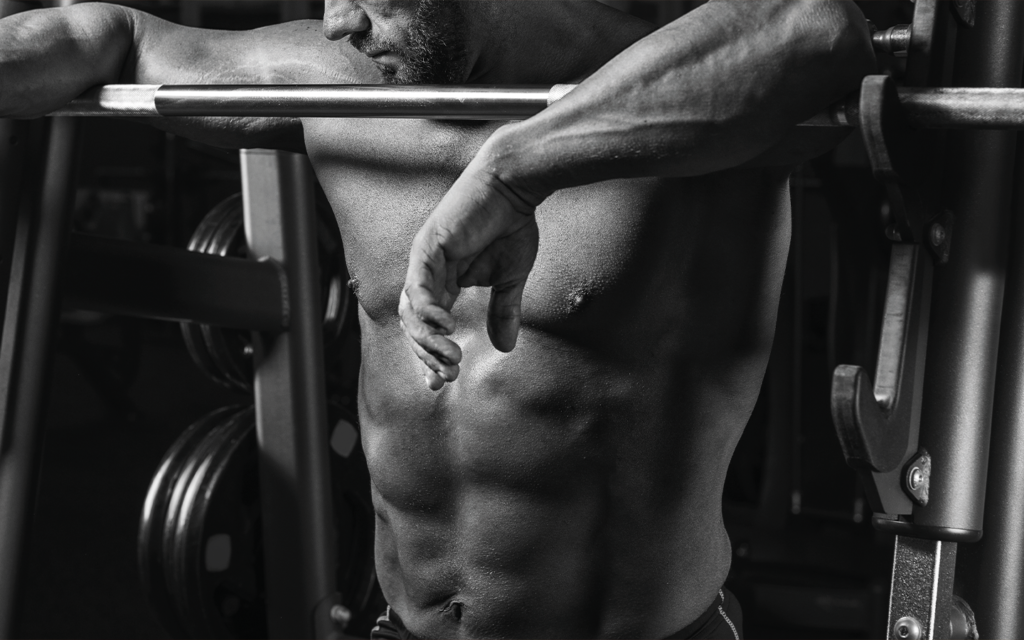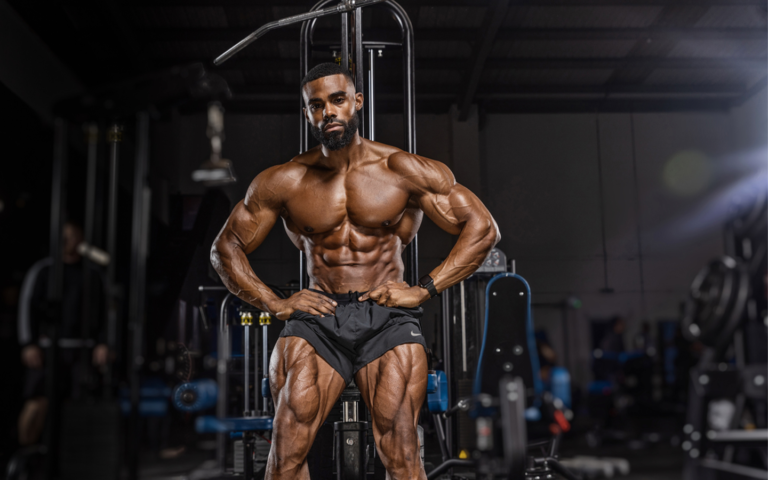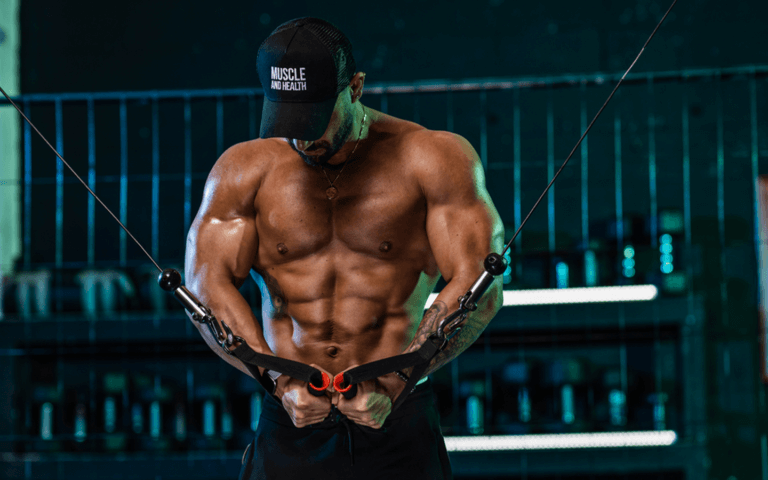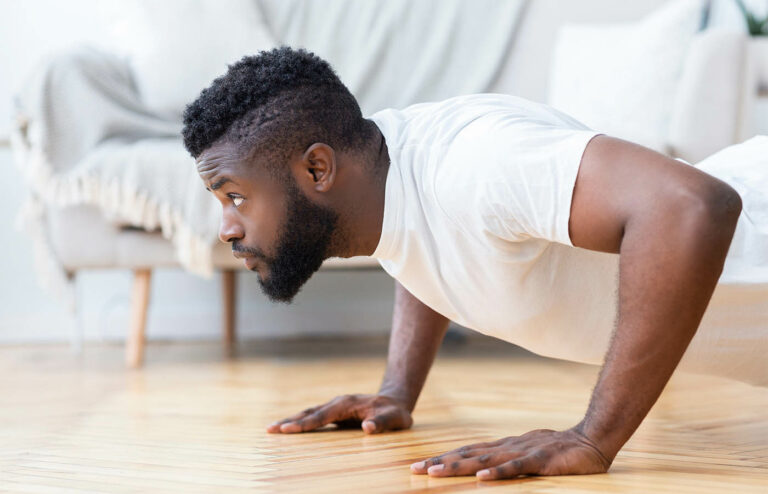Author: Marc Edwards
Photography by Simon Howard
Multi-plane squatting has huge benefits for performance and function. The main goal of squatting should be to take the joints through their full range of motion safely and under load. This requires the muscles of the hips, knees, feet, and ankles to correctly stabilize the joint(s) in all three planes (sagittal, frontal, and transverse).
If you can achieve this, you’ll be able to add more depth to your standard back squat and safely increase the load. Performing deep, full range of motion squats will help you to get the most out of your training, whether your goal is athletic performance, body composition, or optimal mobility. Don’t be afraid to squat all the way down.
Try some of the following back squat variations:
BACK SQUAT
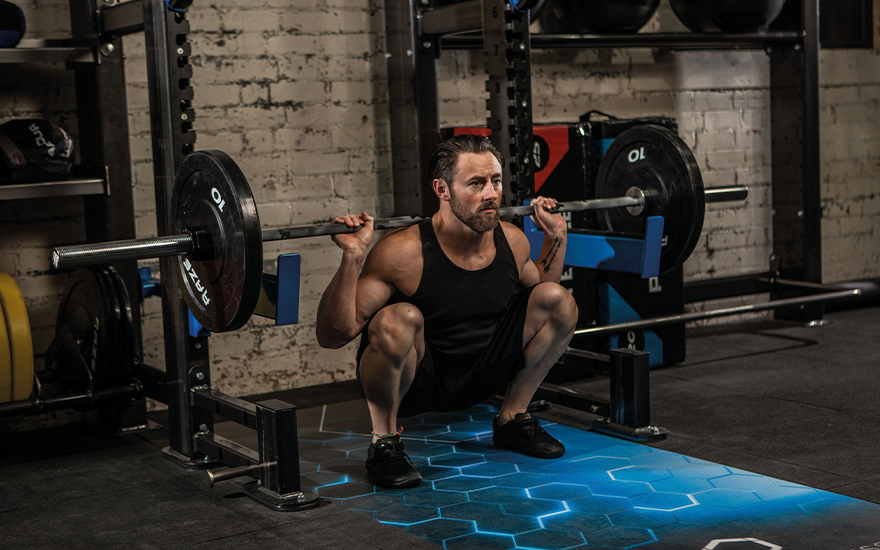
Aim: To work the quads, glutes, and hamstrings
Plane: Predominantly sagittal
How to: Start with your feet hip/shoulder-width apart. Place both feet flat with your weight distributed equally on each foot. Sink your hips back and down towards the floor into a deep squat. Return to a standing position by pushing the heels down into the floor.
SPLIT BACK SQUAT
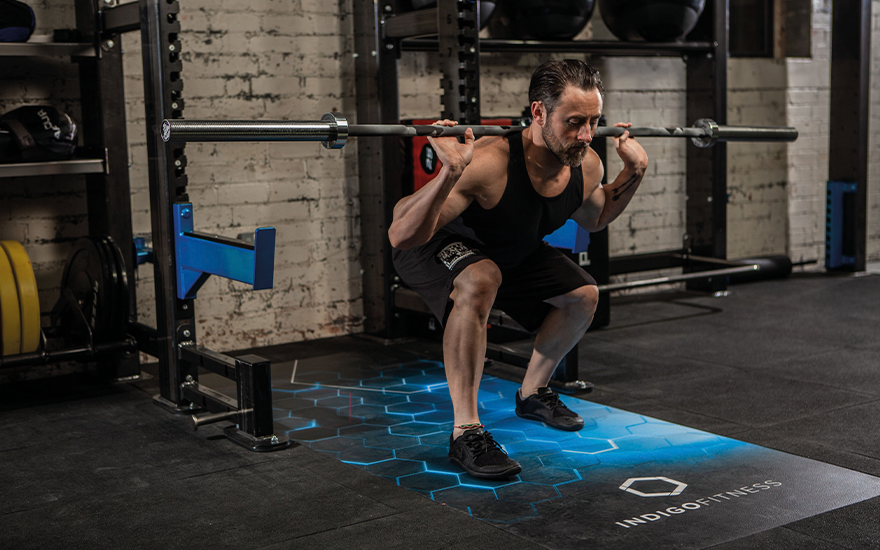
Aim: To work the quads, glutes, and hamstrings, whilst adding more hip flexion to the front leg
Plane: Sagittal
How to: Start with your feet shoulder-width apart. Take a half pace forward with one foot. Place both feet flat with your weight distributed equally on each foot. Sink your hips back and down towards the floor in a deep squat. Return to a standing position by pushing the heels down into the floor. Repeat with the other foot forward.
NARROW SQUAT
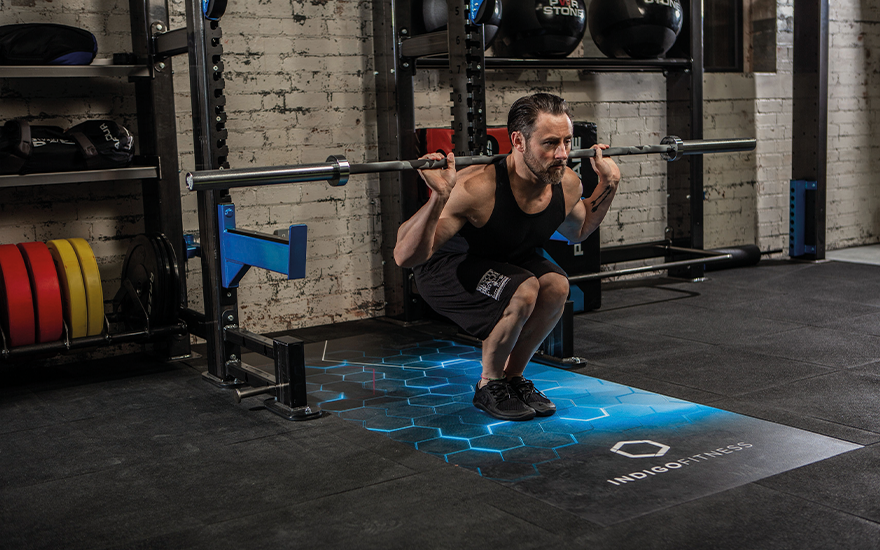
Aim: To work the quads, glutes, hamstrings and adductors, whilst adding more hip adduction
Plane: Frontal
How to: Start with your feet parallel and almost touching. Place both feet flat and distribute your weight equally over each foot. Sink your hips back and down towards the floor into a deep squat. Return to standing position by pushing the heels down into the floor.
WIDE SQUAT

Aim: To work the quads, glutes, hamstrings, and adductors, whilst adding more hip abduction. Also known as the ‘sumo squat’
Plane: Frontal
How to: Start with your feet half a pace sideways from your shoulders (think sumo wrestler stance). Place both feet flat and distribute your weight equally over each foot. Sink your hips back and down towards the floor into a deep squat. Return to a standing position by pushing the heels down into the floor.
EXTERNALLY ROTATED SQUAT
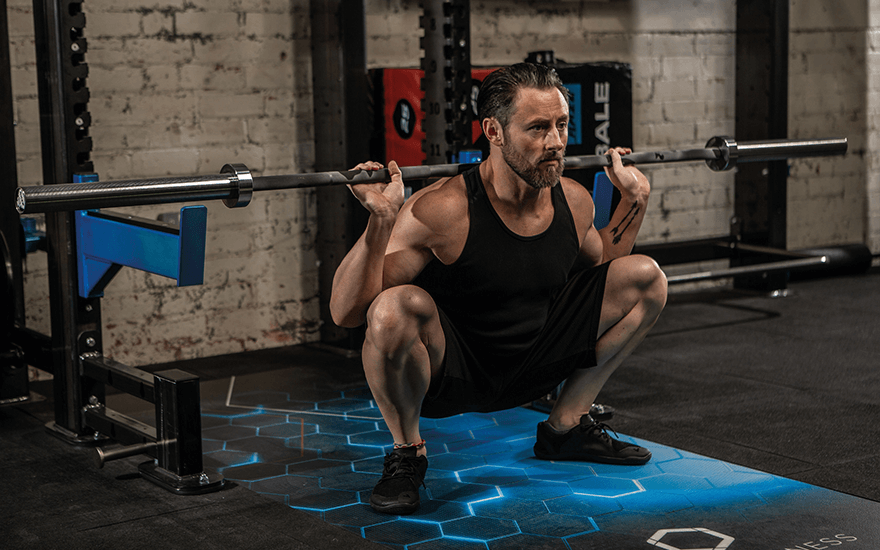
Aim: To work the quads, glutes, hamstrings, and adductors, whilst adding more external hip rotation, thus allowing a deeper squat. Sometimes called a ‘plié squat’
Plane: Transverse
How to: Start with your feet shoulder-width apart and spin your toes outwards. (Think ten and two on an analog clock face). Maintain an equal weight distribution over each foot. Sink your hips back and down towards the floor into a deep squat. Return to a standing position by pushing the heels down into the floor.
Squat Rack or Yoga Mat? Bodybuilder Brad Rowe on Why Yoga Is So Beneficial for Lifters

